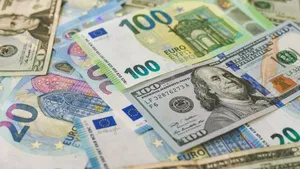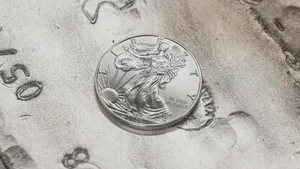The Purchasing Power Paradox: Why Currencies Fail
Have you ever wondered why your grandparents could buy a house for what now seems like pocket change? Or why a dollar today buys so much less than it did decades ago? This isn’t just random economic noise — it’s a predictable pattern that’s been repeating throughout history. Every traditional currency eventually loses its purchasing power, creating what we call the Purchasing Power Paradox.
This paradox presents a fundamental challenge: while mainstream economics generally views moderate inflation as beneficial — even necessary — for economic growth and stability, individual savers invariably see their purchasing power erode over time; and, for some, these losses can be catastrophic. Understanding this tension — between what may be optimal for the macroeconomy and what happens to personal wealth — is essential for anyone seeking to protect their financial future.
A Historical Overview of Currency Debasement
Ancient Rome: A Classic Case Study
The history of Ancient Rome offers a classic example of how currency debasement and social deterioration can become closely connected. Their denarius coin started as trusted, high purity silver specie, issued with the intention of supporting one of history’s greatest empires. When first introduced around 211 BCE, it contained about 4.5 grams of pure silver.5 For nearly 300 years, its weight and purity remained remarkably stable under leaders like Julius Caesar and Augustus, who were known for their commitment to a stable monetary system.2
But Nero, after ascending to the Roman throne in 54 CE, took on many extravagant construction projects and, over time, facing mounting military costs and the expense of rebuilding after the Great Fire of 64 CE, made a fateful decision. Rather than raising taxes (always unpopular), Nero reduced the silver content in the denarius[3], yet kept the face value the same. This seemingly small change marked the beginning of a centuries-long decline.
Subsequent emperors followed Nero’s example: from a purity of greater than 90% silver in the 1st century AD, the denarius fell to under 60% purity by 200 AD, and plummeted to just 5% by 300 AD.3 By the reign of Claudius II in 269 C.E., the antoninianus (a coin worth two denarii, and an early example of “money printing”) had its silver decreased to just 2%[5]. The final stage of the denarius was a duplex plated coin with a copper core and a silver surface[6], eventually becoming so thin that the silver quickly rubbed off after the coin left the mint.
Citizens weren’t fooled. As the intrinsic value of the coins declined, prices rose accordingly. And what began as a temporary “fix” for government finances turned into a self-reinforcing cycle. By the late 3rd century, the once-mighty Roman currency had essentially collapsed, contributing significantly to the empire’s fall.
Medieval Europe and Beyond
This cycle wasn’t uniquely Roman. Throughout Medieval Europe, kings regularly debased their currencies to fund wars and extravagant court expenses. One notorious method was “coin clipping,” where tiny amounts of precious metal were shaved from coins before recirculating them. The practice became so problematic in England that it led to the Great Recoinage of 1696.7
In fact, from Imperial China to Colonial America, virtually every major civilization has succumbed to the temptation of currency debasement. The short-term political benefits were irresistible, but the long-term economic consequences were invariably destructive. This consistent repetition across history demonstrates that currency debasement isn’t accidental; instead, it seems to be an intrinsic part of systems where those who control the money supply benefit from expanding it.
Modern Central Banking’s Inherent Stability Problems
Today’s central banking system may seem far more sophisticated compared to ancient coin debasement, but the underlying dynamics are remarkably similar.
From Gold Standard to Fiat Currency
The modern era of truly unrestrained currency debasement began in 1971 when President Nixon ended the dollar’s convertibility to gold. On August 15, 1971, President Richard Nixon announced the suspension of gold convertibility,6 completing the transition of the dollar to a pure “fiat” system, where currency derives its value solely from government decree rather than any intrinsic worth.
Since then, the dollar has lost over 87% of its purchasing power, with some analysis suggesting the decline could be as high as 98%[8]. This isn’t as dramatic as Rome’s hyperinflation, but the direction is identical — always downward.
The Economic Case for Moderate Inflation
It’s crucial to understand that most economists today don’t view this purchasing power erosion as inherently problematic. Instead, most economists agree that low, stable, and (importantly) predictable inflation is good for an economy[9]. Several key elements support this view:
Monetary Policy Flexibility: Moderate inflation, once its expectation is incorporated into nominal interest rates, would give those interest rates room to go both up and down in response to shifting investment opportunities[10]. This prevents central banks from hitting the “zero lower bound” that constrained policy during the 2008 financial crisis and COVID-19 pandemic.
Investment Incentives: Nobel laureate James Tobin noted that such inflation would cause businesses to substitute investment in physical capital (plant, equipment, and inventories) for money balances in their asset portfolios.9 This can theoretically boost productive investment.
Debt Relief: Inflation makes it easier on debtors, who repay their loans with money that is less valuable than the money they borrowed. Since governments are typically the largest debtors in any economy, this provides fiscal relief.1
The Superneutrality Question
The academic debate over inflation’s long-term effects centers on the concept of “superneutrality.” Superneutrality of money is a stronger property than neutrality of money. It holds that not only is the real economy unaffected by the level of the money supply but also that the rate of money supply growth has no effect on real variables[13].
However, superneutrality is more accurately described as a technical accident of combining certain types of assumptions. When any one of these assumptions is abandoned, monetary growth has real effects[14]. The empirical evidence on superneutrality remains mixed, with studies showing different results depending on methodology and time periods examined.
The Political Economy Challenge
While economists debate the macroeconomic effects of inflation, the political economy reality is more straightforward: democratic governments face irresistible short-term pressures that make currency debasement nearly inevitable over long time horizons.
The Democratic Trilemma: Central banks face an impossible trilemma. They’re expected to:
- Keep inflation low
- Support economic growth
- Ensure financial stability
The problem? These goals often conflict. When recessions threaten, central banks invariably choose growth and stability over purchasing power protection. They lower interest rates and expand the money supply, which provides short-term relief but erodes currency value over time.
Political Cycle vs. Monetary Stability: The growing tension between central banks and democratically-elected politicians can make low and stable inflation more difficult to achieve in the future[15]. Politicians win elections by delivering economic growth now, not by protecting purchasing power decades later. This creates a systematic bias toward inflation that central bank independence[16] can mitigate but not eliminate.
The Debt Trap
Modern governments are also susceptible to falling into a debt trap, which too often makes currency debasement a certainty. As national debts grow larger relative to economic output, governments face three unpleasant options:
- Default on the debt (politically catastrophic)
- Drastically raise taxes (politically unpopular)
- Inflate away the debt by debasing the currency (politically easiest)
The United States saw its debt-to-GDP ratio climb from a low of about 23% in 1974 to approximately 120% in 2024.5 This mounting debt burden makes it increasingly likely that future inflation will run higher than the official 2% target, similar to how 3rd century Roman emperors couldn’t maintain the silver content of their coins.
Furthermore, net interest payments on federal debt are climbing from $231 billion in 2014 (1.3% of GDP) to a projected $799 billion in 2024 (3.0% of GDP) — the highest ratio since 1996.3 This creates additional pressure for monetary expansion to service the growing debt burden.
The Mathematics of Purchasing Power Deterioration
The erosion of purchasing power follows mathematical principles that are both simple and devastating for individual savers, regardless of whether inflation benefits the broader economy.
The Rule of 72
A useful tool for understanding how quickly inflation destroys purchasing power is the “Rule of 72.” This formula approximates how long it takes for money to lose half its value:
Years to halve purchasing power = 72 ÷ Annual inflation rate
At the Federal Reserve’s “ideal” inflation rate of 2%: 72 ÷ 2 = 36 years — about half a lifetime. At 4% inflation: 72 ÷ 4 = 18 years. At 8% inflation (which the US experienced in 2022): 72 ÷ 8 = 9 years.
These calculations reveal why even “moderate” inflation is so destructive over time. A 3% inflation rate (considered “normal”) will halve your purchasing power in just one generation:
72 ÷ 3 = 24 years
Compounding in Reverse
Most people understand that compound interest helps savings grow. What fewer appreciate is that inflation is essentially compound interest working in reverse. It doesn’t just subtract a fixed amount each year — it compounds, accelerating the destruction of purchasing power over time.
For more precise insight, we can move beyond Rule of 72 estimates and use the actual formula for calculating the future purchasing power of a currency (after accounting for inflation):
Future purchasing power = Present value / (1 + inflation rate/100)^years
To return to our moderate inflation example, $100 today, subjected to 3% annual inflation for 24 years, would have a purchasing power of just $49.19 — less than half its original value.
The Money Supply Connection
Modern economic theory establishes a direct relationship between money supply expansion and long-term inflation. The equation of exchange, MV = PQ, where:
- M = Money supply
- V = Velocity of money (how quickly it circulates)
- P = Price level
- Q = Quantity of goods and services produced
Shows that if the money supply (M) grows faster than economic output (Q), and velocity (V) remains relatively stable, prices (P) must rise. This is exactly what we see in practice.
Since 1971, the U.S. money supply has grown much faster than economic output, explaining the sustained loss of purchasing power. During unusual events like the 2020 pandemic, when the money supply expanded by nearly 30% in a single year, the resulting inflation could be predicted based on this formula. The website WTF Happened in 1971 chronicles extensive evidence showing how wages and productivity diverged after the gold standard ended, with productivity gains no longer translating directly into wage increases.3
Why This Matters to Everyday People, Not Just Economists
The steady erosion of purchasing power isn’t just an abstract economic concept — it fundamentally reshapes people’s lives in several critical ways, regardless of any macroeconomic benefits.
The Individual vs. Aggregate Disconnect
Here lies the heart of the purchasing power paradox: policies that strengthen aggregate economic performance can mask deep personal losses. Most economists believe that long-term inflation is essentially a monetary phenomenon, while short-term fluctuations can be correlated with shocks to supply and demand.3 Yet this macroeconomic view offers little comfort to savers watching their wealth erode.
The Invisible Tax
Inflation acts as a hidden tax that no one votes for but everyone pays. Unlike income or property taxes, there’s no exemption form or deduction available. It silently transfers wealth from savers to debtors (primarily governments and corporations).
When your salary increases by 2% but inflation runs at 4%, you’ve effectively taken a 2% pay cut, even though your nominal income has risen. Most people focus on their nominal income rather than their real (inflation-adjusted) income, making this wealth transfer largely invisible.
Retirement Planning Disaster
The long-term nature of purchasing power erosion makes it particularly devastating for retirement planning. Someone saving for 40 years of retirement needs to account for how inflation will impact their savings.
At 3% inflation, prices double roughly every 24 years. This means a 65-year-old retiree will see prices double by age 89. Without investment returns that consistently outpace inflation, retirement savings can prove woefully inadequate when they’re needed most.
This is why financial advisors increasingly recommend that even conservative investors maintain substantial stock market exposure throughout retirement — bonds and savings accounts rarely keep pace with true inflation rates.
The Middle-Class Squeeze
Perhaps most concerning is how currency debasement contributes to wealth inequality. Those with assets (stocks, real estate, businesses) that appreciate during inflationary periods tend to maintain or increase their purchasing power. Meanwhile, those who rely primarily on wages or fixed incomes fall further behind.
Housing costs have skyrocketed relative to incomes, with median home prices rising more than 1,600% while median household income increased only 475% since 1971.3 This explains why homeownership has become increasingly unattainable for younger generations despite rising incomes. Nominal wages have increased, but home prices have risen even faster due partly to currency debasement.
The Hidden Social Costs
Beyond the direct economic impacts, persistent currency debasement creates broader social stresses:
- It punishes prudent saving behavior
- It rewards excessive borrowing
- It creates economic uncertainty that makes long-term planning difficult
- It fosters feelings of the entire economic system being rigged
These dynamics breed social cynicism and short-term thinking that ripple throughout society. The systematic transfer of wealth from savers to asset owners creates generational tensions and undermines the social contract that hard work and saving lead to prosperity.
Learning from History’s Lessons
The pattern of currency debasement stretches back thousands of years, from ancient Rome to modern America. The specific mechanics change — from reducing silver content to digital money “printing” — but the fundamental dynamics remain remarkably consistent.
What can we learn from this historical pattern?
First: always expect traditional currencies to lose purchasing power over time. This isn’t a conspiracy or a flaw — modern economic theory demands moderate inflation to benefit overall economic performance. However, be ever-aware this represents an inherent feature of systems where political authorities control money supply and face short-term democratic pressures that conflict with long-term monetary stability.
Thus, the real concern isn’t whether moderate inflation is economically beneficial — most evidence suggests it can be. The issue is whether democratic political systems can maintain the delicate balance required for truly “moderate” inflation over decades. Central bank independence matters for price stability — and price stability matters for consistent long-term growth. But good leadership is never guaranteed, and you need to ask yourself if those in charge will always be trustworthy and aligned with your best interests.
Second: the mathematics of inflation means that even “low” inflation rates destroy purchasing power over timeframes that matter to individual people — especially their working and retirement years. The Federal Reserve’s 2% target, while seemingly modest, cuts everyone’s purchasing power by nearly 40% over a 25-year period.
Finally, protecting yourself requires understanding these dynamics and investing accordingly. Keeping substantial savings in cash virtually guarantees long-term purchasing power loss. Productive assets like stocks, real estate, and businesses have historically provided better inflation protection, though they come with their own risks and volatility.
The question for the 21st century isn’t whether we should have moderate inflation — that debate is largely settled among economists. The question is whether democratic political systems can maintain the institutional frameworks necessary to keep inflation truly moderate over the long term. The factors which facilitated low average inflation for decades have started to reverse. These include globalisation, de-unionisation, and a deepening of the Washington consensus — including, especially, fiscal restraint.3
Until that institutional question is resolved, understanding the purchasing power paradox remains essential for anyone hoping to preserve their financial future. The historical evidence from Rome to today suggests that the forces driving currency debasement are deeply embedded in human political and economic behavior, making this knowledge not just useful but essential for financial survival.
The purchasing power paradox ultimately reflects a deeper tension in democratic capitalism: the conflict between what may be optimal for short-term political cycles and economic aggregates versus what preserves individual wealth over generational timescales. Recognizing this tension is the first step toward navigating it successfully.
References
- Blanchard, O. (2019). Public debt and low interest rates. American Economic Review, 109(4), 1197-1229.
- Butcher, K. (2015). Debasement and the decline of Rome. Studies in ancient coinage in honor of Andrew Burnett, 181-205.
- Butcher, K.; Ponting, M. (2015). The metallurgy of Roman silver coinage: from the reform of Nero to the reform of Trajan. Cambridge University Press.
- Crawford, M. (1974). Roman republican coinage / 2, Studies, plates and indexes. Cambridge University Press.
- FRED. (2024). Federal Debt: Total Public Debt as Percent of Gross Domestic Product. Stlouisfed.org. https://fred.stlouisfed.org/series/GFDEGDQ188S
- Harl, K.W. (1996). Coinage in the Roman Economy, 300 B.C. to A.D. 700. Johns Hopkins University Press.
- Haskell, H.J. (1939). The New Deal in Old Rome: How Government in the Ancient World Tried to Deal with Modern Problems. United States: A.A. Knopf.
- Office of the Historian. (2019). Nixon and the End of the Bretton Woods System, 1971–1973. State.gov. https://history.state.gov/milestones/1969-1976/nixon-shock
- Roman Currency Debasement | UNRV Roman History. (2025). Unrv.com. https://www.unrv.com/economy/currency-debasement.php
- Sayles, W.G. (2007). Ancient Coin Collecting III: The Roman World - Politics and Propaganda. United States: Krause Publications.
- Tobin, J. (1965). Money and Economic Growth. Econometrica, 33(4), 671-684. https://www.jstor.org/stable/1910352
- Waddell, B. (2022). The Economic Crisis of the 1690s in England. Cambridge University Press.
This article is for educational purposes only, and should not be used for any other purpose. The information contained herein does not constitute and should not be construed as an offering of advisory services or an offer to sell or solicitation to buy any securities or related financial instruments in any jurisdiction.
Certain information contained herein concerning economic trends and performance is based on or derived from information provided by independent third-party sources. Blockchainsure believes that the sources from which such information has been obtained are reliable; however, Blockchainsure cannot guarantee the accuracy of such information.





